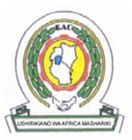
In order to promote public education and public safety, equal justice for all, a better informed citizenry, the rule of law, world trade and world peace, this legal document is hereby made available on a noncommercial basis, as it is the right of all humans to know and speak the laws that govern them.

EAS 231:2001
ICS 65.120
EAST AFRICAN COMMUNITY
© EAC 2001
First Edition 2001
iDevelopment of the East African Standards has been necessitated by the need for harmonizing requirements governing quality of products and services in East Africa. It is envisaged that through harmonized standardization, trade barriers which are encountered when goods and services are exchanged within the Community will be removed.
In order to achieve this objective, the Partner States in the Community through their National Bureaux of Standards, have established an East African Standards Committee.
The Committee is composed of representatives of the National Standards Bodies in Partner States, together with the representatives from the private sectors and consumer organizations. Draft East African Standards are circulated to stakeholders through the National Standards Bodies in the Partner States. The comments received are discussed and incorporated before finalization of standards, in accordance with the procedures of the Community.
East African Standards are subject to review, to keep pace with technological advances. Users of the East African Standards are therefore expected to ensure that they always have the latest versions of the standards they are implementing.
© East African Community 2001 — All rights reserved*
East African Community
P O Box 1096
Arusha
Tanzania
Tel: 255 27 2504253/8
Fax: 255-27-2504481/2504255
E-Mail: eac@eachq.org
Web: www.each.org
* © 2001 EAC — All rights of exploitation in any form and by any means reserved worldwide for EAC Partner States’ NSBs.
iiEAST AFRICAN STANDARD
EAS 231:2001
Bone meal for compounding animal feeds— Specification
This East African Standard prescribes the requirements for bone meal used as a mineral supplement in animal feeds.
Bone meal shall be the product obtained from under composed bones after removal of adhering tissues, defatting, sterilization by steam under pressure, drying and milling.
The particle size shall be such that not less than 90 % by weight of the meal passes through a 1 700-µm (1.70 mm) sieve.
Bone meal shall be free from any objectionable odour, toxic ingredients, adulterants, insects and pathogenic micro-organisms.
Bone meal shall also conform to the requirements prescribed in Table 1 below.
| Parameter | Requirements (per cent by mass) | Methods of test: EAS 74-1* |
|---|---|---|
| Moisture content, max. | 4 | Clause 4 |
| Crude protein, min. | 20 | Clause 5 |
| Crude fat, max. | 3 | Clause 9 |
| Calcium, min. | 25 | Clause 10 |
| Phosphorus, min. | 9 | Clause 11 |
| Total ash, min. | 65 | Clause 7 |
| Acid insoluble ash, max. | 1.0 | Clause 8 |
|
* Method of test for animal feeds NOTE The values specified for requirements for calcium are on moisture free basis. |
||
Bone meal shall be free from salmonellae, spores of bacillus anthracis, and clostridia when tested according to the method prescribed in EAS 74-3, Methods of test for animal feedstuffs — Part 3: Bacteriological tests.
Bone meal shall be packed in sound containers free from parasites and any causative agents of infectious diseases. The containers shall protect the product from spillage and deterioration during normal handling and transportation.
The packages shall be securely closed and marked to display the following information:
1